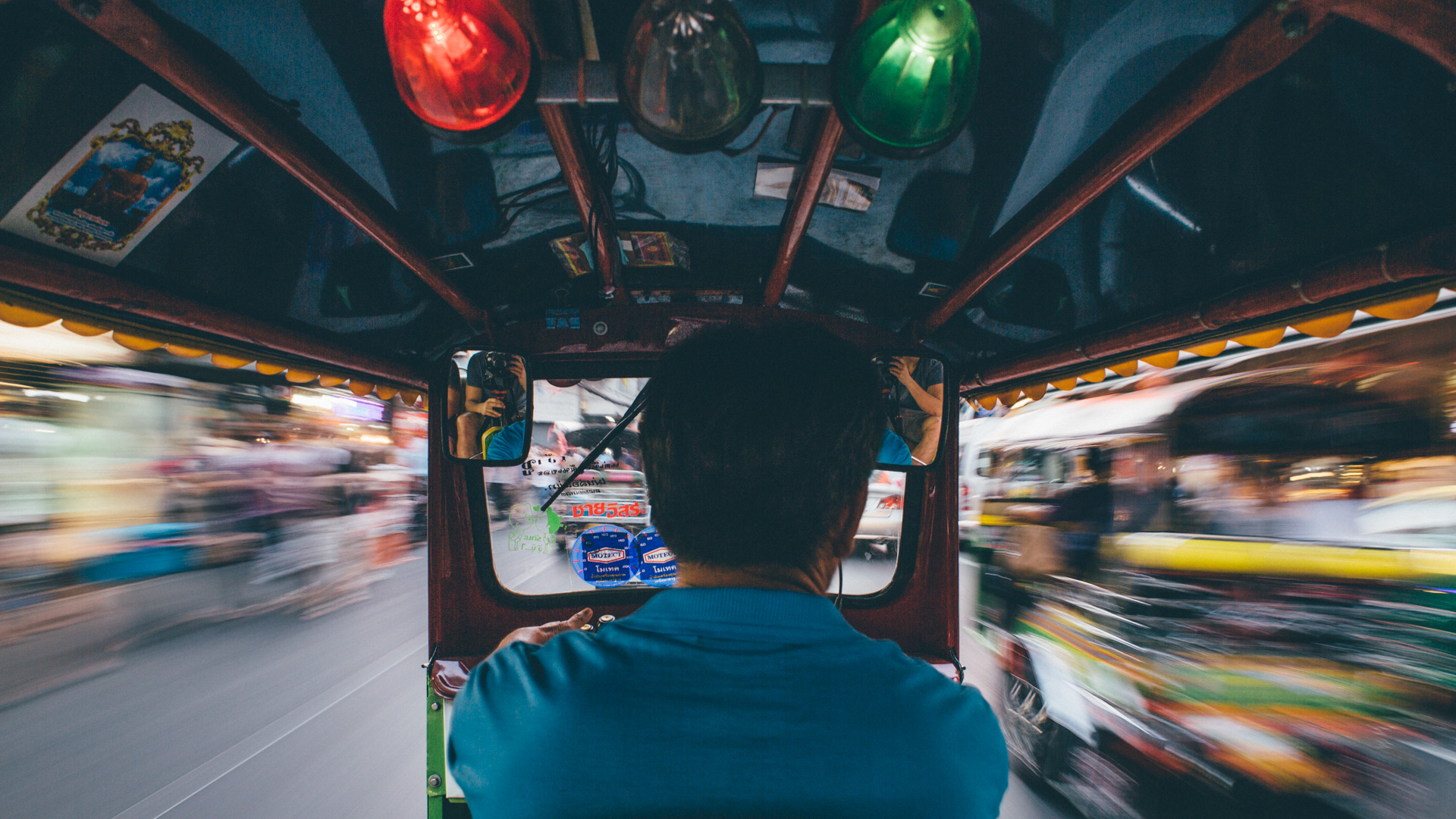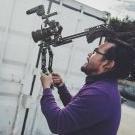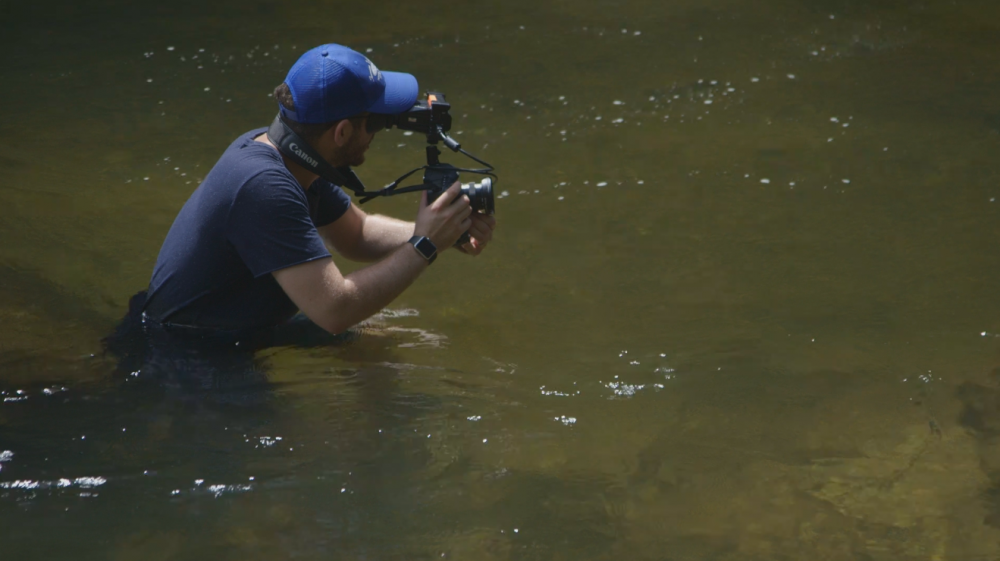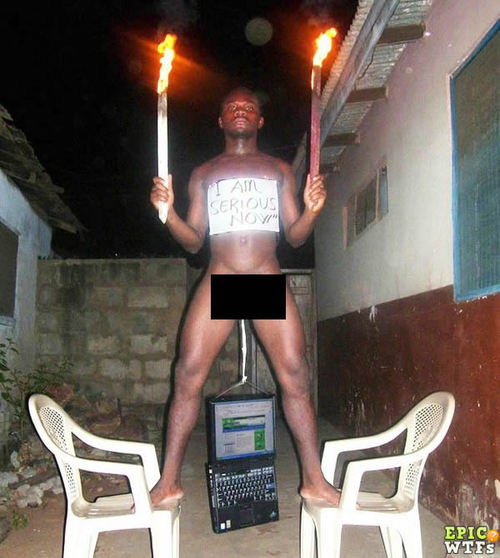-
Posts
92 -
Joined
-
Last visited
Content Type
Profiles
Forums
Articles
Posts posted by Kurtisso
-
-
On August 7, 2016 at 11:10 AM, Ed_David said:
But you can easily convince a producer to use your camera if you show them the work you do on it and can explain to them why it's a better choice for the project. If the producer doesn't listen to you, they aren't being a smart producer.
On August 7, 2016 at 6:39 AM, Fritz Pierre said:Kinemax...find their examples on Vimeo...amazing image!
That's why sometimes to the client/producer my KineMAX is like an Arri Alexa (can shoot 16 stops DR at 3K in raw with beautiful digital grain, colour and highlight rolloff) and sometimes it is like a RED Dragon (4K compressed raw high frame rates and 6k acquisition in a smaller, modular body).

Camera choice for me starts with what do I want to achieve given the concept for the work, can I achieve this with the current tools I own (or do I have to hire) while considering budget generally, and then how do I communicate this to client/producer/director etc... for which if I have to I will put together a combination of test footage/previous work with a bit of a sample look.
- Flynn and Marco Bentz
-
 2
2
-
If you need to shoot fine details but don't want a dedicated macro lens, achromatic diopters(close up filters) are a good option too. I use Leica Elpros with a 52 - 55mm stepper for Nikkors. The 105mm F2.5 dances pretty well with those

-
Has anyone tried putting the BMPCC speedbooster on the GX85 yet? It works beautifully on the Digital Bolex

-
On July 3, 2016 at 9:46 AM, silvertonesx24 said:
Kinefinity (both KineMini and KineMax) shoot 4:3.
YEAP.
KineMAX shoots a few different 4:3 modes as well. it can do 4:3 anamorphic at 4.3k and 4k at 14 stops DR and kineRAW (.krw), or "Golden" 4:3 anamorphic at 2.2k and 2k at 16 stops DR in either krw, CinemaDNG or Cineform.
-
2 hours ago, Geoff CB said:
...and more unstable than either of the standard options. I did this for awhile until an OSX update made my sound card stop working, with the only fix being a hardware update.
Good to know. It must be pretty difficult to troubleshoot too. Can't just hand it over at the "Genius Bar"

Do you have any experience with running OSX in a virtual machine on PC? I've run Windows in a virtual machine on OSX a bit before but that was buggy as hell.
-
Hackintosh anyone?
http://lifehacker.com/the-always-up-to-date-guide-to-building-a-hackintosh-o-5841604
Cheap build like a PC, but osx and run all your fav mac stuff on there.
-
57 minutes ago, iaremrsir said:
The maximum gain we can have on the EMCCD register is 40x at 0°C (threshold of diminishing return) which is about a 5.3 stop boost. The problem with going that far is that we'd likely end up getting more noise in the midtones since we'd have to use more of the low gain signal. We would technically extend our dynamic range by a stop and get better SNR in the deep shadows, but that gives way to noise in the middle. So at default it'd be a 4.3 stop boost on the EMCCD at normal operating temperature. And we'd be able to get around 14.8 stops (based on well cap and read noise RMS) without any highlight reconstruction. You'll be able to see pretty far into the dark with this sensor (it is designed with surveillance in mind after all). There's also the EMCCD only mode, where we could use high gain and get around the same dynamic range as the current D16, but cleaner.
My main thing with this is that we haven't had any FPN. So on a sensor with 14+ stops (without HR) that doesn't have FPN

I also forgot to mention that the sensor can switch to "Normal mode" (11+ EV DR) instead of the intra-scene switchable gain to achieve 60fps at 1080p.
MAN. No FPN on real global shutter, rich colour depth, 14.8 stops DR and ability to crank to 60fps? Seriously Eddie, how do we make this happen?!!!!
-
Awesome @Tito Ferradans, hope it works out!
-
On July 11, 2016 at 10:31 AM, Tito Ferradans said:
The title is pretty clear, I believe. I got a couple Century Optics adapters but they came without the locking screws. Any hints on finding (or making) replacements?
Thanks! :D
I just took some calipers to the locking screw of my DS-1609-SB, looks like a 3mm diameter.
I would say take it down to Pacific Fasteners on 1st near Boundary maybe. They have a warehouse full of fasteners. I took my Redstan down there a little while ago to get longer nylon screws.
-
4 hours ago, iaremrsir said:
Since it's based off of the 5.5 micron design, without the EMCCD we'd see a base ISO of 200. But since the sensor has what they call "intra-scene switchable gain" (this happens in the analog realm, not digital like the ALEXA and BMDs), we would likely see a base ISO of ~1600 when using the intra-scene mode. In determining this, I'd basically have to find the operating point of the sensor to see what would give the most even distribution of dynamic range vs noise vs sensitivity.
That "intra-scene switchable gain" sounds really kick-ass!
From the ON Semiconductor site:
"The KAE-02150 deploys an innovative output circuit design that enables high-dynamic range imaging by allowing either conventional CCD (low-gain) or EMCCD (high-gain) outputs to be utilized on a pixel-by-pixel basis within the same image. Charge from each individual pixel is measured and the signal level is compared to a user selectable threshold in the camera system to determine where each charge packet is routed. Pixels from very low-light regions of the scene can be selectively routed to the EMCCD output, while pixels from bright regions of the image – which would typically saturate an EMCCD register and distort the image – are routed to the conventional CCD output amplifier. With this intra-scene switchable gain feature, signals from both outputs can then be re-combined, allowing one camera to properly render bright regions in a dark field of view and enabling dynamic compensation under changing conditions such as headlights entering or leaving an extreme low light scene."
Based off of this, and your previous part about identifying the optimal higher base ISO to get the best in DR vs Noise vs Sensitivity, would it be possible to dial in different "sensitivity range modes" for different lighting situations? For example, you're shooting a horizon and it's not the optimal time of day so your forested hills are very dark and the sky is blown, would it be possible to have say a larger range like ISO 200 for higher charge values and ISO 3200 or 6400 for lower values? But then later when the the sun comes down, be able to close that range off to get a cleaner signal to noise ratio? I hope that makes sense... Haha
-
-
- mercer and Zach Goodwin
-
 2
2
-
55 minutes ago, iaremrsir said:
That is, in fact, the sensor I'm talking about
 the KAE-02150. So, so nice. If you read up on EMCCDs, you'll see the higher the gain, the lower the amount of noise. It works by varying voltages in a special gain register and the electrons collide with each other and a phenomenon called impact ionization happens. More electrons are created! And electrons are our signal! So more gain = more electrons = more signal = less noise
the KAE-02150. So, so nice. If you read up on EMCCDs, you'll see the higher the gain, the lower the amount of noise. It works by varying voltages in a special gain register and the electrons collide with each other and a phenomenon called impact ionization happens. More electrons are created! And electrons are our signal! So more gain = more electrons = more signal = less noise
Super cool! If more gain = less noise, would that mean a higher base ISO? This with some sort of built in or easily swappable (like the mythical kraft dinner camera) ND would be pretty unstoppable!
Also, is it possible with the EMCCD to do something like "dual gain" to increase dynamic range? I get really jacked up about anything not CMOS. QuantumFilm looks pretty amazing too.
-
2 hours ago, iaremrsir said:
I developed the color science and did all my tests with the camera on Windows. There's the free HFS explorer tool, or you can buy HFS drivers for Windows for 20 USD.
If we were to make other cameras, I think a D35 and a D16 mk II based on EMCCDs would be my preference.
The D16 mk II would hopefully be based on the KAE-02150. So 30fps, 14+ EV of DR without any of the highlight reconstruction. That's without any noise reduction in the circuitry of the sensor or in the software, so it'd keep the same mojo of the D16.
The D35 is more of a dream camera for me. Nothing like it currently exists. I actually made a list a while ago and posted on our user group that Joe was actually on board with had the funding been there to pursue it. It'd basically be an EMCCD version of our sensor, but double the dimensions and resolution horizontally and increase the dimension vertically enough to achieve 16:9.
Yessss!!! Get DB back to Kickstarter Eddie? I would be incredibly interested in either of those! A D16 with 30fps for that slight slowing, better DR and better lowlight would be a dream. Seriously, sounds like Matthias and I are signed up :P
Is this the sensor you are talking about? It appears to see in the dark!
- Liam and Mattias Burling
-
 2
2
-
Loving this discussion going on! I am very grateful to hear different perspectives especially if they meander too!
11 minutes ago, Liam said:Wasn't trying to actually argue with you either. Just a different taste thing or what have you. All good, good discussion. Yeah my favorite filmmakers always write and direct haha. My short film is really close.. which I didn't expect so quickly. having some people give feedback. Eoshd is its next stop. Admittedly it's a little boring right now maybe, but that's kind of part of the joke, so we'll see! Haha
Off topic here but speaking of writer/director combo, I'm blown away at Richard Linklater's process for "Boyhood". To have a general structure of the story written for the 12 years, but then to pretty much produce a short episode each year and to have had pretty much full cooperation from cast and crew over the 12 years, pretty astounding stuff! They couldn't sign a 12-year contract either, as anything over 7 was illegal. He must have made an amazing pitch to IFC, getting them to commit to that process.
-
4 minutes ago, Liam said:
John Cassavetes, Joe Swanberg, Derek Cianfrance, and Jay and Mark Duplass are some of the big ones to use that style where it's basically entirely ad-libbed. Shadows by Ray Carney gives a pretty great look into Cassavetes' style (and the film it's directly about is on hulu). that film was born out of actual improv, then some scenes scripted later, then Cassavetes just screwed with the actors.. didn't give one of the actors the script until the last minute so that she would stumble over her words, insulted another off camera to get him to yell in the scene, etc. a difficult style to perfect, but very cool - and if you can do it right, great performances out of total amateurs! It's beautiful. Joe Swanberg has talked about how he doesn't use a script at all, just like a three page treatment. Mark Duplass has given some tips on that style too (multi-camera, film chronologically, don't over rehearse, don't do takes over and over if you can help it, improvise a scene before beginning shooting which happens just before your first scene). though Cianfrance and Swanberg use one camera usually, and Cianfrance can do a hundred takes sometimes. most of that isn't to do with the scripting, but yeah, hope that helps. I can post more if you'd like (interviews etc), but I feel this post is getting long
 . I just recently wrote a script I want to be mostly ad-libbed.. I kind of just wrote everything around the dialogue, still in script format. it became about 15 pages, but I think it would end up maybe 50 minutes.. less of a science with that route
. I just recently wrote a script I want to be mostly ad-libbed.. I kind of just wrote everything around the dialogue, still in script format. it became about 15 pages, but I think it would end up maybe 50 minutes.. less of a science with that route
i love this type of discussion. I think the "shooting" subforum was technically intended for posts like these as well as sharing your work, but it wouldn't have much discussion there, being a little buried, i think. I say post as much of this as you want, people can select which topics they want to participate in, no biggy
Awesome! I ran out of likes for today so there's an IOU one for you. Good luck with the script!
I'm definitely very interested in learning how to work better with amateur actors and how to write with the intention of walking the line of documentary and fiction.
Yeah I check that "shooting" subforum from time to time but it seems to be more of just a screening room for people's work, which is cool and all!
-
I echo @Policar and @freeman on notes, and definitely from people you trust to give you good, honest feedback but also relevant because you also trust their artistic opinion.
If I'm ever confronted with a beautiful shot that doesn't quite fit, I like to tell myself that I can save that shot to sell as stock footage. I never do, but it helps me mentally in the moment hahahahah
-
-
23 minutes ago, mercer said:
I think what a lot of creative people, who are in the earlier stages of their pursuit, forget is that honing your craft is more important than absolute creative freedom.
100% agree. It's a good thing to have constraints to work with. It really helps to ground my work.
Those two titles are added to the list, excited to dive right in!
-
Thanks for the input everyone.
17 hours ago, mercer said:Truby's Anatomy of Story is a good book. Truby is a great analyst of movies. A good primer for screenwriting is Screenplay by Syd Field. Another great, quick read is by American playwright, screenwriter and director David Mamet called Three Uses of the Knife.
I will add Screenplay by Syd Field and David Mamet's Three Uses of the Knife to the list as well! I'm very interested in learning the pre-existing structure and language of screen writing, so that I can better articulate the nebulous ideas I have in my head, for myself to flesh out concepts and for clients when I pitch and the rest of the crew and talent to inspire better performances and spontaneity. I came across this interesting concept (I really wish I could credit this to where I found it) where you write a script with the intention that everything gets ad-libbed, but you use very evocative language to guide the spontaneity thus getting very natural performances but getting your direction without having to overbearingly direct.
6 hours ago, mercer said:Well said. Syd Field was a little unpopular for awhile because a lot of writers thought his "paradigm" was to formulaic when in reality it was just a basic truth about screenplay structure. There are a million ways to tell a story, but if your screenplay is not structured properly, your narrative will fall apart. Of course, not all screenplays would benefit from that paradigm... Especially short screenplays, but all screenwriters will benefit from understanding structure.
I also recommend reading some Carl Jung, his ideas on the "collective subconscious" and "archetypes" are extremely valuable for a storyteller.
Carl Jung sounds like a great idea, I have read derivatives of his work and found them to be really interesting so I will add that too! IMO Psychology, philosophy, sociology and the like are in my opinion incredibly important to understanding and then telling stories about people, their behaviours and decision paths.
9 hours ago, Axel said:Imo, you can read this as primer and closer. Not, because it is so insightful or inspiring, but on the contrary, because it analyzes something that should be quite obvious for someone who wants to learn how to tell a story.
In recent years, it has become hip to refer to The Hero's Journey, deducting the roots for all narrations in mythology. Quite interesting read, but if Syd Fields "findings" actually repeat what Aristotle had found some 2300 years before about the nature of drama (completely with 3 to 5 acts and what have you), these books (i.e. The Hero With A Thousand Faces) don't help to understand story, let alone let you find your own narrational structure.
Reality proof: good stories don't fit those "receipts". Moby Dick, just for instance, would never have been approved by any lector infected by those dogmata.
There is a hereditary need for human beings to tell stories. In the office between colleagues, to your children, around the campfire. They may be personal, educational, reassuring, unsettling asf. But they have to be interesting. The content as well as the form. Someone offers you a formula? Fine, but someone wise once said the form should follow the content. Find something you find worth telling to the world, and the best way to tell it will be revealed to you by your muse.
There's so much to learn from Ancient Greek texts. It's too bad that Hollywood has bastardized many of the ancient myths. I have been trying over the last 2 years to revisit Plato's republic in its entirety, but it's pretty dense and often puts me in a sleepy trance. Which is great, because I used to have terrible insomnia.
I agree that form follows content big time. When I was studying interactive design in school, I hated the "designer" connotation that came with it thanks to fashion. Style over substance is a serious piss-off.
That being said, learning doesn't stop with a sentence. Things aren't accidental, and studying and learning how to better do one's craft is a constant pursuit. The music that I compose now isn't classical, death metal, punk rock, hip-hop, downtempo, minimal tech-house etc... but I ingested all those things. I also studied music theory, composition and history when I was younger. I don't open any of those books or actively revisit any of that learning before I sit down to write music but it definitely has helped me a lot and I am glad I had that opportunity.
In the future here on EOSHD, I'd like to encourage more discussion on non-gear related things, is that something that you guys and gals would be interested in too?
-
Heyall, I am trying to become a better storyteller and recently I have stumbled across this book by John Truby called "The Anatomy of Story". Before I dive into it, does anyone here have any experience with this text? Also, if anyone has any good suggestions for other learning resources about filmmaking/storytelling I would love to hear! I'm refreshed, motivated and ready to dive deep into 1-a-day film watching (I will fail but try my best) and daily research.
-
20 hours ago, NX1user said:
ON your subject under the tree, if you had used a reflector or a light, you'd see big jump in quality.
100% agree on the reflector. Bringing down highlight levels in post after they're blown doesn't quite give you the image you're looking for. If only we all had arri alexas!
I find also sometimes it helps to back off the LUTs / film emulation a touch, they tend to saturate and blotch up the image a bit I find. And if you combine that with adding sharpness and contrast, it creates this strange posterizing effect on the out of focus elements. Maybe the bitrate hack would help with this too, with more information there, the less the image falls apart when manipulating it.
-
I am very NOT IN LOVE with my Tiffen vari-ND and might give that SLR magic a try. Anything goofy about the SLR Magic to know about though? I wasn't a big fan of the giant blue splotch that the rangefinder cine has.
Also, anyone have any suggestions for bigger than 82mm without going drop in filter holder? My s16 cooke zoom vignettes with an 82mm ring in front.
-
I just saw a c500 on ebay for $5700 this week...





Red Dragon? Anyone?
In: Cameras
Posted
Yeah, the AXS-R5 is $5,350.00, I imagine that the R7 will cost more. Add $3,600.00 for each TB of proprietary memory... yowza! With fun ways to make money like that, my guess is that we won't be seeing compressed raw in the mid-range/prosumer cams for aaaaaaawwwhile. Probably longer than it took for s-log to find its way into prosumer.
I see that Sony is pushing that the R5 and R7 are weather-sealed, are the F55 and F5 weather-sealed too?